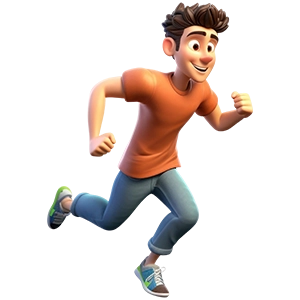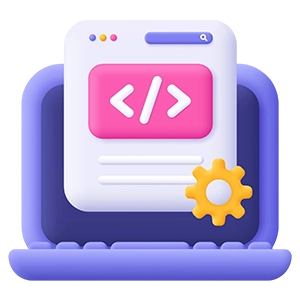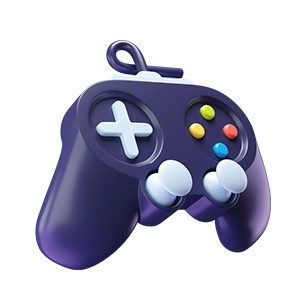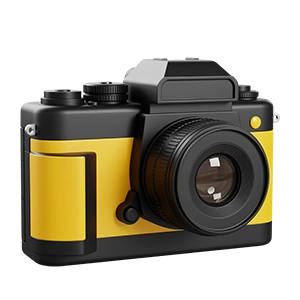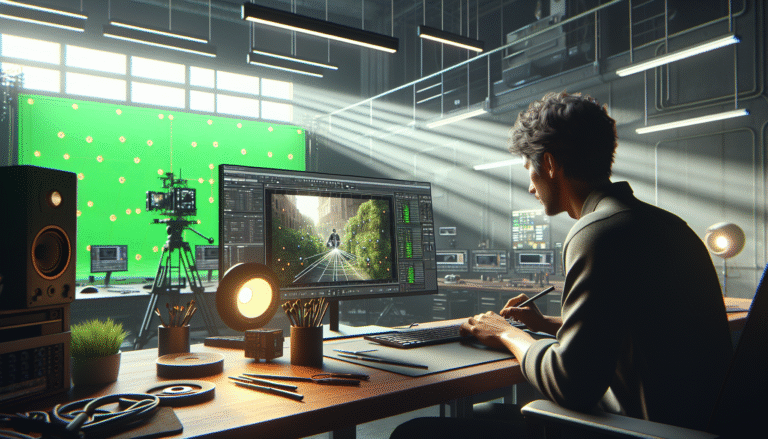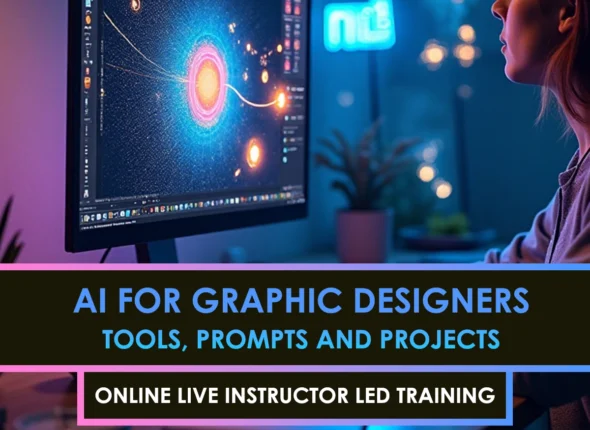In your journey to seamlessly blend computer-generated elements with real-world footage, match moving in VFX is the key technique that keeps everything anchored in place. If you’ve ever wrestled with floating 3D objects or jittery camera movements, yeah, big shout out for your perseverance. The good news? With the right approach, you can transform those frustrating shots into rock-solid composites that fool even the most eagle-eyed viewers.
Discover match moving essentials
What it is
Match moving, also called camera match move, is all about analyzing the movement of a real camera and replicating it virtually. By extracting details like position, rotation, and lens distortion, you create a CG camera with identical motion. That means any 3D object placed in your digital scene appears to exist in the same physical world as your live-action footage.
Why it matters
Accurate camera tracking lets you integrate 3D elements, visual effects, or animations into live footage without those telltale slips and slides that scream “fake!” This technique is invaluable for everything from set extensions to complex creature shots. Without it, your CG additions risk looking unmoored and unconvincing, leaving your audience (and your clients) unconvinced.
Prepare your footage carefully
Secure camera data
Before you dive into trackers, gather as much information about the real-world shoot as possible. That includes the camera model, lens focal length, and sensor size. The more you know about the physical setup, the more accurate your match move will be. If you’re aiming to replicate a beginner-friendly workflow, you might explore camera tracking in after effects. For more advanced solutions, check out camera tracking in nuke if you’re comfortable with node-based compositing.
Plan your shoot
If you’re involved in production, plan your shots with tracking in mind. High-contrast markers or naturally occurring details help 2D and 3D trackers lock onto points. Avoid motion blur when possible, and maintain stable lighting conditions to reduce confusion for your tracking software. Make sure the environment you capture has enough parallax (foreground and background separation) to ensure a reliable solution later on.
Track and solve your scene
2D vs. 3D trackers
Most compositing tools include a 2D tracker, which can work well for objects on a consistent plane. But for true camera match moves, a 3D tracking system is essential. It calculates depth and perspective, generating a virtual camera that mimics the real one. If you want a deeper dive into various tools, check out our camera tracking in blender guide for an open-source approach.
Refine your camera solve
After the initial tracking pass, you’ll typically see a “solve” stage, where the software processes all that point data into a coherent 3D camera. If the solve quality is low, you might need to:
- Delete erroneous points that “slip” off the intended features
- Add additional tracking points to cover poorly defined areas
- Adjust lens settings if you notice glaring distortion discrepancies
Take your time here. This refinement is where a so-so track becomes production-ready.
Integrate 3D elements seamlessly
Align details properly
Once you have a solid camera solve, import that camera into your 3D or compositing software. Position, scale, and rotate your CG elements so they match the geometry of the real scene. Double-check lighting consistency, too. Even a slight mismatch can give away the illusion in an instant.
Enhance with compositing
The final stage is compositing. Think about shadows, reflections, and color correction. Integrating your 3D additions within the live-action scene means they should blend in terms of hue and contrast. You can use holdout mattes, as well as advanced roto techniques, to ensure every element lines up perfectly. If you’re brand-new to these steps, our 3d camera tracking tutorial has a detailed breakdown.
Avoid common pitfalls
Unsteady footage
Excessive camera shake complicates the match move process, making it harder to track feature points. In these cases, consider stabilizing your footage first or using specialized high-contrast markers on set. Otherwise, your tracker may struggle to maintain a consistent lock.
Mismatch in scale
Your CG elements might look right in the viewport but appear out of proportion once rendered. Always verify scale references. Make sure a coffee cup doesn’t tower over your actor or that a doorway doesn’t dwarf them unrealistically. A little real-world measurement can prevent big headaches.
Take it further
Explore advanced techniques
Different scenarios call for specialized approaches, from object-based tracking (when your subject moves independently) to lens distortion correction (for wide-angle or fisheye lenses). Becoming familiar with these advanced methods is an extremely important skill for any aspiring VFX artist aiming to level up.
Practice on real projects
Experience is the secret sauce. As you tackle more footage, you’ll learn to spot patterns in tracking data and troubleshoot issues faster. Embrace challenging shots with moving subjects, varied lighting, or more complex camera movements. Every project raises your confidence and polishes your technique.
Finally, remember this: match moving might look complicated, but it’s within your grasp if you approach it patiently and methodically. With careful planning, precise tracking, and an eye for integration, you’ll unlock a whole new layer of realism for your visual effects. Good luck anchoring those epic 3D creations in your live-action world!
FAQS – Frequently Asked Questions
What Is Match Moving In VFX?
Match moving in VFX is the technique of tracking camera movement and inserting CGI elements so they seamlessly align with live-action footage.
Why Is Match Moving In VFX Important?
Match moving in VFX ensures that digital assets correctly follow camera motion, preserving realism and spatial consistency in the final composite.
How Does Match Moving In VFX Work?
Match moving in VFX works by tracking reference points across frames to calculate camera position and orientation, enabling accurate CGI integration.
What Software Is Used For Match Moving In VFX?
Popular tools for match moving in VFX include PFTrack, SynthEyes, 3DEqualizer, and Boujou, each supporting complex camera solve workflows.
Is Match Moving In VFX The Same As Camera Tracking?
Yes, match moving in VFX is often called camera tracking—it reconstructs virtual camera motion to match the live-action footage.
What Are The Steps In Match Moving In VFX?
Match moving in VFX typically involves tracking feature points, solving camera motion, refining the solve, and exporting to 3D software.
Can Match Moving In VFX Handle Moving Objects?
Yes, advanced match moving in VFX can track moving objects separately from the camera, enabling dynamic CGI integration.
What Is the Difference Between 2D and 3D Match Moving In VFX?
2D match moving in VFX tracks image planes, while 3D match moving reconstructs full camera movement in three-dimensional space.
Can Match Moving In VFX Be Automated?
Many modern tools offer automated tracking solutions, but manual supervision is still essential for accurate match moving in VFX.
How Accurate Is Match Moving In VFX?
Accuracy of match moving in VFX depends on track point quality, scene complexity, and software capabilities, often reaching sub-pixel precision.
Is Match Moving In VFX Used In Feature Films?
Yes, match moving in VFX is essential in feature films, TV, and commercials to blend CGI into real-world footage convincingly.
What Are Common Challenges In Match Moving In VFX?
Common match moving in VFX challenges include lens distortion, motion blur, occlusion, and lack of distinct tracking points.
Can I Learn Match Moving In VFX As a Beginner?
Yes, beginners can learn match moving in VFX through tutorials, online courses, and practice using sample footage.
How Long Does Match Moving In VFX Take?
Time for match moving in VFX varies—simple shots may take minutes, complex scenes can take hours or days of refinement.
Can Match Moving In VFX Correct Lens Distortion?
Yes, match moving in VFX workflows typically include lens distortion calibration to ensure accurate track and solve.
How Is 3D Geometry Used In Match Moving In VFX?
3D geometry in match moving in VFX helps refine camera solves by providing physical reference geometry within the scene.
Does Match Moving In VFX Support Multiple Cameras?
Yes, match moving in VFX workflows often support multi-camera setups for consistent solves across different angles.
What Is Clean Plate In Match Moving In VFX?
A clean plate in match moving in VFX is a shot of the scene without actors or props, used for background reconstruction and tracking aid.
How Does Match Moving In VFX Integrate With Compositing?
Match moving in VFX feeds accurate camera data into compositing tools like Nuke or After Effects, enabling correct placement of CGI layers.
Are There Free Tools For Match Moving In VFX?
Free match moving in VFX options exist, such as Blender’s tracking tools, but commercial packages offer more advanced features.
Can Match Moving In VFX Be Done on a Budget?
Yes, match moving in VFX can be achieved on a budget using open-source software, careful planning, and good tracking technique.
What Skills Are Needed For Match Moving In VFX?
Key skills for match moving in VFX include attention to detail, understanding of camera optics, patience, and proficiency with tracking software.


